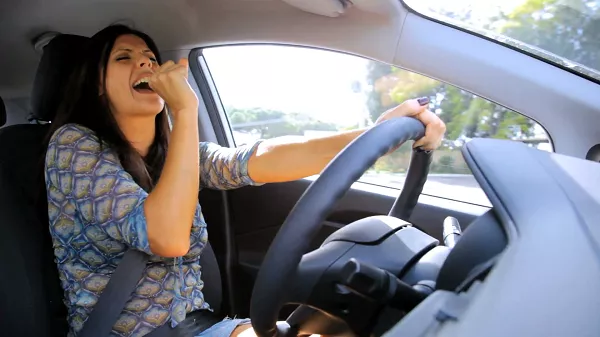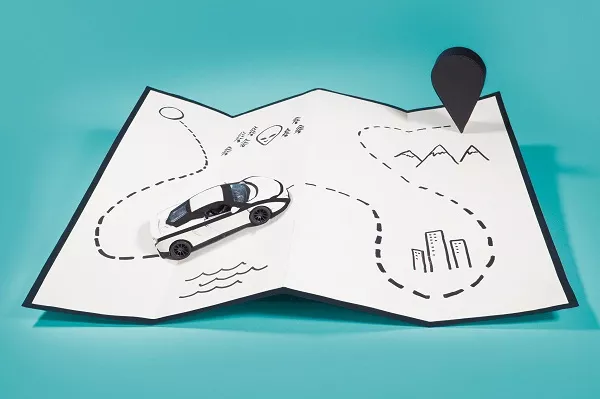Most, if not all drivers have struggled to keep their eyes open at one point, especially during a long drive following a tiring day. When you combine fatigue, exhaustion, and sleepiness, the result is drowsy driving, a situation that entails serious risks.
This is usually caused by having inadequate sleep, untreated sleep disorders, side effects of medication, drinking under influence, or changes in work shift schedules.
Tiredness happens to everyone regardless of age, when you push your body too hard; the less rest you get increases your risk of driving in an exhausted state. Lack of sleep can affect your response time, judgment and capacity to focus, and all these are unsafe when you’re operating a machine on public roads.
Whether you're setting out on a long trip or just a brisk drive around the corner, it’s important that you get sufficient rest before you take the wheel.

There is a high risk of accident when you are drowsy while driving
1. Know the signs of drowsiness
You should be able to tell if you’re in a less-than-ideal condition before you hit the road. If you happen to be yawning constantly, rubbing your eyes, feeling restless and irritable or even disoriented, consider letting someone else take over the driver’s seat. Or if you’re driving alone, pull over at a safe stop and rest.

Stop driving if you feeling restless and irritable
2. See your doctor
If you still feel tired despite having eight or nine hours of sleep, it’s probably time to seek medical help. Consult a doctor in case you need to be checked for a sleeping disorder, some of the signs of which are loud snoring and waking up in the middle of the night.
Even if you think you have had enough sleep before embarking on a long drive, you are still at risk of feeling drowsy behind the wheel, if the disorder is left untreated.

Consult your doctor for other reason why you feel drowsy
3. Check your medications
Take a closer look at the prescription medications you take every day if you notice that they make you feel drowsy. Whenever possible, ask your doctor for alternatives. If you need to buy over-the-counter medicine for colds, influenza, or allergies, read the label first. Many of these medicines list drowsiness as a possible side effect.
>>> More tips on safe driving:
- 3 driving habits that can cause cancer and other health problems
- 10 bad driving habits you need to discard right now
4. Take some caffeine
While we’re on the subject of drugs, one commonly-used stimulant is caffeine, usually found in coffee, soda, tea and energy drinks. Chugging down any of these is good idea to jumpstart your system in case you feel drowsy or tired, as caffeine immediately kicks in and allows you to become more awake and alert.
However, you might want to steer clear of these if you have adverse reactions to caffeine, such as heart palpitations.

A cup of coffee can help you stay awake
5. Listen to music
If you’re driving alone, music is your best friend as it livens up an otherwise boring and monotonous journey. One caveat though, is that listening to soothing and rhythmic music might encourage you to fall asleep.
Try listening to fast and energetic music instead. For many people, listening to upbeat sounds can be effective in keeping them awake. If you can sing along to your favorite tunes, then all the better.

Singing while driving keeps you active and alert
>>> You might want to read: Best in-car entertainment ideas to fight boredom while in a long drive
6. Roll your windows down
Getting some fresh air into the car is another way to help you stay awake, as traveling in a confined space such as a car means that the air is just being circulated around the cabin, which makes you feel sleepier.
Roll your windows down or open your sunroof if you have one to let a bit of fresh air inside, best done while cruising on the provincial sections of the expressway.
Even better if the outside temperature happens to be cold since the cool, fresh air can give your alertness an extra boost.

Getting some fresh air into your car
7. Chew gum
Chewing a piece of gum gets your jaw moving, stimulating your facial muscles to keep you awake. Always carry a pack of gum around that you can use any time you feel drowsy; don’t leave it in the car, especially if you tend to park out in the sunlight.

Remember to carry a pack of gum around
8. Take a break
You might be tempted to skip those roadside breaks during your drive because you want to reach your destination as quickly as possible. But taking occasional breaks to do some stretching, especially on long drives, will also help keep you awake, apart from energizing your back and legs.
Sitting in a fixed position for hours can stiffen your muscles and takes a considerable toll on your body and mental alertness, so always plan your stops, whether it’s to stop for a meal, stretch or maybe squeeze in a short nap.

A power nap helps you regain much-needed energy
9. Daytime driving
If possible, try to schedule the bulk of your driving during daylight hours when you feel more alert. Daylight stimulates your mind and improves your response time while driving. Unless you’ve made the necessary adjustments to your sleep schedule, avoid driving between midnight and 6 am, when you’ll feel the sleepiest
10. Plan your trip
It all boils down to careful planning, placing contingencies where necessary. Plan your sleep schedules as well as your stopovers, so you’re well-rested. For an average adult, some 7-9 hours of sleep are enough for a long drive.
And if you can, travel with the company to keep you awake on long drives, with at least one other person holding a driver’s license so that he or she can take the wheel and allow you to rest. Also, schedule your stops at least once every two hours, so that you can still feel fresh by the time you reach your destination.

Enjoying your journey without risk!
Recent posts
- How to be a good car passenger: 7 Dos & Don'ts to remember Apr 20, 2019
- Top 10 bad behaviors that drivers should avoid while driving Mar 20, 2019
- A complete guide to safe driving in the Philippines Feb 11, 2019
- Long Drive: 12 Essential Things to Carry with You Feb 28, 2020











